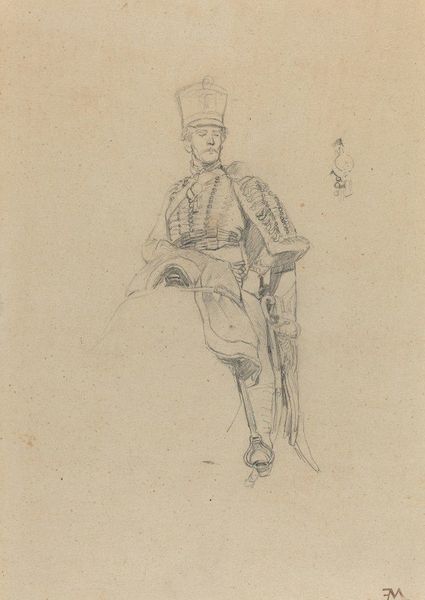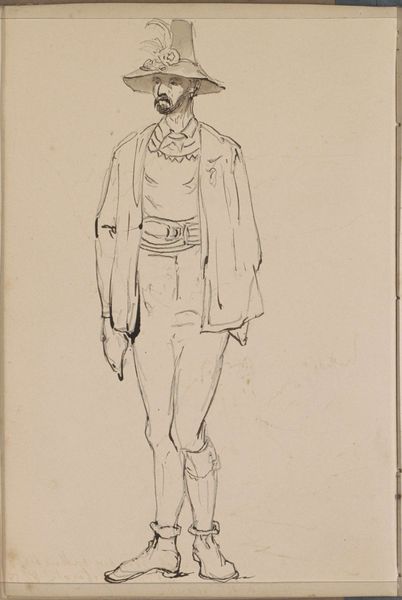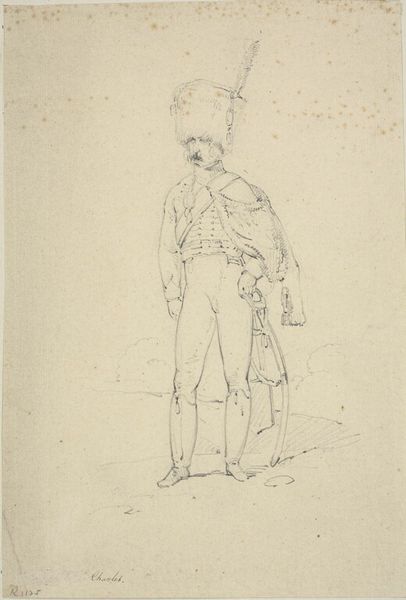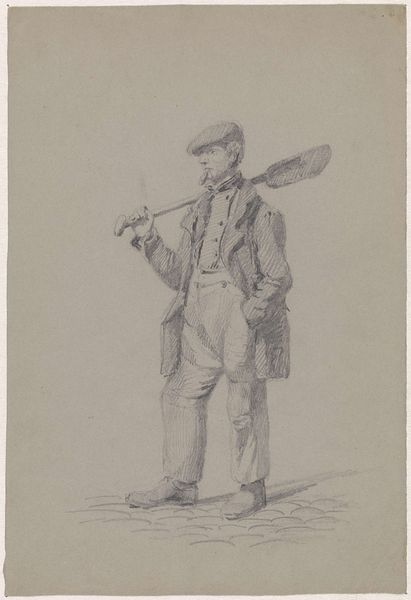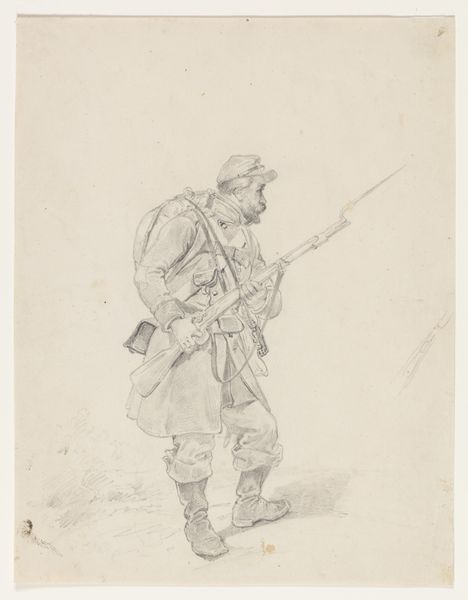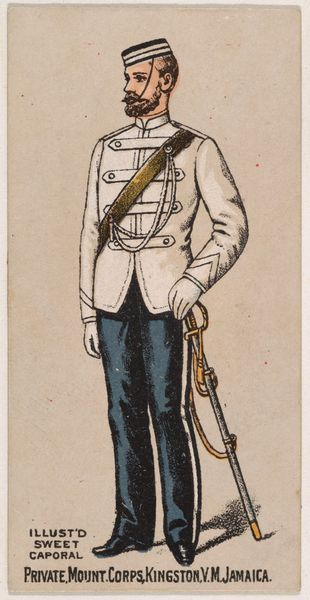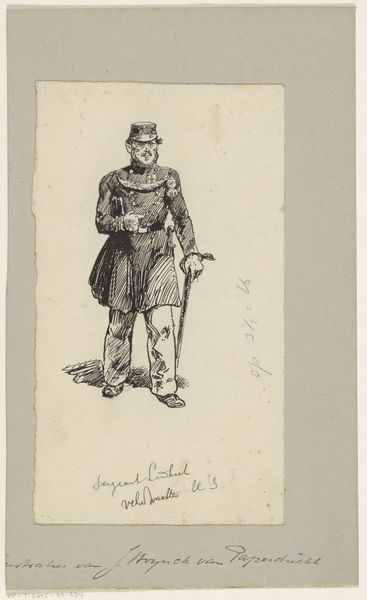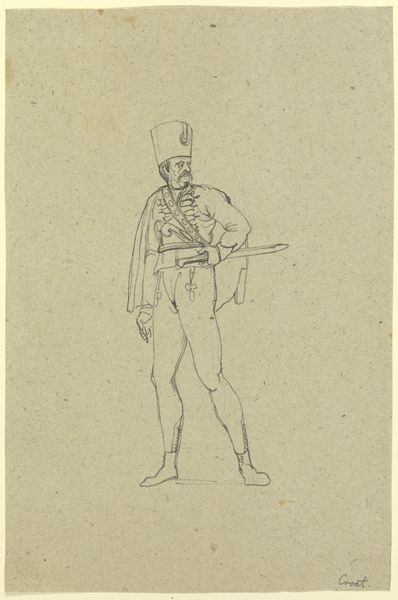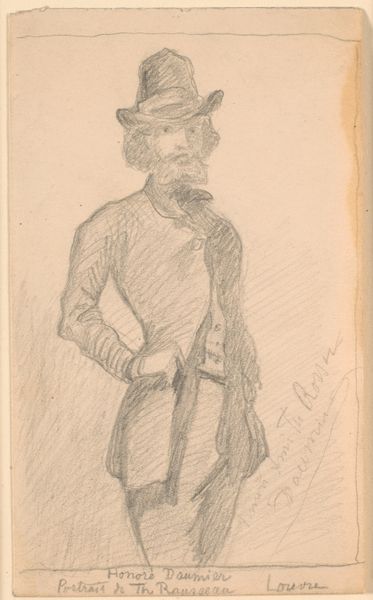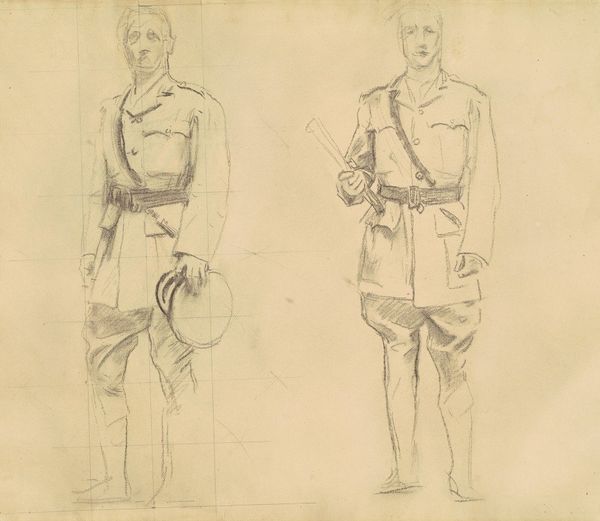
drawing, pencil
#
drawing
#
16_19th-century
#
pencil
#
history-painting
#
academic-art
#
realism
Copyright: Public Domain: Artvee
Editor: Here we have Winslow Homer's "Standing Officer," created in 1862 using pencil. There's something so immediate and stark about it, perhaps the lack of color, that gives it a sense of seriousness and observation. What do you see in this piece, especially given the artist's body of work? Curator: The salient aspect for me is the artist’s focus on the purely visual elements. Notice how Homer deploys line and form to articulate the officer's stance, his uniform, even the fall of the light across the figure. The composition avoids idealization, instead opting for a seemingly objective record. It’s almost a study in textures: the smooth paper, the varying densities of the pencil strokes used to model volume. It begs the question: how do these visual choices inform our perception of the subject? Editor: So, you're drawn to the formal aspects rather than any narrative about the Civil War era. Curator: Precisely. The visual syntax transcends historical context. Look at the geometry in the composition—the strong verticals and diagonals. It presents an intriguing structure. How does that inherent structure contribute to the work's overall impact, regardless of subject matter? Editor: It's like the form *is* the content in a way. I initially read it only for its historical elements, but I now better appreciate the artistry of how it's made. Curator: Yes, indeed. This focus also draws us to the material: we must look at the pencil, paper and mark-making before finding representational meaning. What do you make of this perspective? Editor: Considering Homer’s skill through the structure and form definitely expands my perception, moving away from a single symbolic interpretation to see more depth. Thank you.
Comments
No comments
Be the first to comment and join the conversation on the ultimate creative platform.
